|
HOME: www.hiltonpond.org |
|||
THIS WEEK at HILTON POND Subscribe for free to our award-winning nature newsletter (Back to Preceding Week; on to Next Week) |
--ONE BONUS SLOT LEFT! -- Come be part of a real |
HUMMINGBIRDS IN MISSISSIPPI . . . September was a busy month at Hilton Pond Center, even though we spent several days of the month away from home at distant locales. Travel is broadening but did put a bit of a crimp in local banding efforts that are usually quite productive this time of year--especially as Ruby-throated Hummingbirds are preparing to head south. There were so many tasks to attend to we fell hopelessly behind on writing "This Week at Hilton Pond," but for the sake of having a continuing on-line record of our banding efforts--there's a monthly tally below near the end of the page--we are posting this abbreviated installment. (We hope to do better sometime soon--maybe in early 2018!)
All text, maps, charts & photos © Hilton Pond Center A Yellow-breasted Chat caught on 4 September 2018 was only our second banded at the Center since 2003 and our 136th in 36 years. This migratory species was more common around Hilton Pond when the property was in its "shrub stage" of vegetation succession. The chat is an enigmatic species. Once thought to be an over-sized Wood Warbler, it is now placed in its own family, the Icteriidae, with two "i's"--not to be confused with the one-"i" Icteridae (Blackbird Family).
All text, maps, charts & photos © Hilton Pond Center We were gone from Hilton Pond for nearly a week in early September--the optimal time for hummer banding in the Carolina Piedmont--because were invited to speak at the 18th Hummingbird Migration & Nature Celebration at Strawberry Plains Audubon Center in Holly Springs MS, about an hour south of Memphis TN.
All text, maps, charts & photos © Hilton Pond Center This festival is the largest outdoor event at any Audubon-affiliated site in the country, annually attracting upwards of 10,000 people. Among the highlights are hummingbird banding sessions and a variety of talks by nationally known natural history experts. Altogether more than 600 people attended our presentations about "Operation RubyThroat: The Hummingbird Project."
All text, maps, charts & photos © Hilton Pond Center At the festival we talked about our 34 years of hummingbird research here and in the Neotropics and invited attendees to join our upcoming citizen science expedition to Ujarrás, Costa Rica in January 2018. Amazingly, Cathy Sherman (above) of Oxford MS was so enthused about the prospect she signed up on the spot using her cell phone. We think that's a first! Modern technology is truly incredible. (NOTE: Our next Neotropical expedition with open slots is set for mid-November 2018. Sign-up info will be posted early next year.)
All text, maps, charts & photos © Hilton Pond Center Upon returning from the Mississippi festival we immediately got back to work capturing and banding hummingbirds. Although some undoubtedly passed through while we were out-of-state, plenty of hummers remained at Hilton Pond. In fact, banding totals on 11 September 2017 were unprecedented for the 34 years we've been studying hummingbirds at the Center. Amid post-hurricane windy conditions and light rain between 7:45 a.m. and 6:10 p.m. we trapped, banded, and released a total of 36 Ruby-throated Hummingbirds--obliterating our local one-day total for this species! (Our previous record was 26 RTHU, set one day in late May 1997 after being at Hawk Mountain Sanctuary for the first two months of hummingbird season.) With that many birds entering our traps things got backed up at the banding table, so several times we held a few birds temporarily in lingerie bags. (See photo above; bags are hanging indoors in the office area.) Cloth bags are a standard and harmless way to keep hummers; the birds can't hurt themselves in the soft material and can breathe through the open mesh. Prior to release, we carefully placed each hummer's bill in a feeder; all but one of the 36 filled its crop with fresh sugar water before flying back into the rain. (Because of the day's circus-like feeder action those hand-held drinks might have been the longest uninterrupted meals the hummers had all day!)
All text, maps, charts & photos © Hilton Pond Center We also color-marked each bird (hatch-year male above, with dark streaking and a few red gorget feathers) with a swatch of temporary and non-toxic green dye on the upper breast. This told us whether a bird in the trap had been caught previously, allowing for quick release of banded individuals. And, if you live south or southwest of Hilton Pond Center at York SC, please be on the lookout for these green-marked birds during fall migration and let us know immediately if you spy one. (A sharp photo would be most helpful.) The daily total on the 11th included just three adult RTHU (a male and two females), with a ton of immature birds (17 males, 16 females). The adult male was unusual in that we've only caught four on later dates, two each on 13 and 14 September. Also rather late was a previously banded female from last year; we've captured only two such "old returns" after 11 September. Today's bonanza brought the Center's 2017 ruby-throat total to 237--so far our fourth-best year since 1984, with about a month still to go in the current hummingbird banding season. Because of a plethora of independent variables, it's always hard to determine cause-and-effect relationships in nature. Thus, we can't tell if big numbers on 11 September might have been the result of Hurricane Irma to the south--or because we were gone for the past four days to Mississippi . . . or both . . . or neither.
All text, maps, charts & photos © Hilton Pond Center Despite the rush of Ruby-throated Hummingbirds on 11 September, the vast majority had departed Hilton Pond Center by 23 September 2017 when an interesting warbler hit our nets. We've always said the late great bird artist and field guide author Roger Tory Peterson did us a disservice by calling some of these migrants "confusing fall warblers," giving folks a cop-out when it comes to NOT trying to identify them in non-breeding and/or immature plumage. Can you identify the bird just from the field marks visible in the photo above? If not, We'll give you some hints: 1) Pale streaking on the back; 2) White undertail coverts; and, 3) wing bars and tail spots. That narrows it down to two species. Two more hints should be all you need to know to arrive at the correct ID: 1) There was a hint of buffiness on some of the undertail coverts; and, most important, 2) the legs and feet were dark. What's your conclusion? Use your field guide. Don't be a quitter! (And no silly guesses!)
All text, maps, charts & photos © Hilton Pond Center The best WRONG guess would be Blackpoll Warbler, but that species has paler legs and especially pale toes. (We're sorry we didn't get a foot photo.) That leaves immature Bay-breasted Warbler (BBWA) as the correct I.D.--only our 13th banded locally in 36 year at the Center! Congrats if you figured it out AND to those who tried but didn't.
All text, maps, charts & photos © Hilton Pond Center One of the more easily recognizable butterflies at Hilton Pond Center is the Red-spotted Purple, Limenitis arthemis. Folks often mistake it for one of the swallowtails--even though there are no "tails." Metallic blue hindwings and four reddish-orange spots along the edge of the forewings are diagnostic. Southern populations of this species mimic the Pipevine Swallowtail, which is toxic, while northern populations have a broad white band across both forewing and hindwing and are called White Admirals. Hybridization occurs where their ranges overlap, effectively swamping potential speciation. Northern caterpillars dine on Yellow Birch leaves, while those in the South primarily eat cherry foliage. Adults prefer flower nectar and rotting fruit juices.
All text, maps, charts & photos © Hilton Pond Center One of our favorite birds--the Brown-headed Nuthatch (above)--used to be more common and even nested in boxes at Hilton Pond Center. Never abundant, one or two could nonetheless be observed almost daily at our sunflower seed feeders--until the mid-1990s when a neighboring farmer clear-cut a 70-acre stand of mature Loblolly Pine. The local nuthatch population never recovered, so we're always pleased to see and band one of these little stubby-tailed bark-gleaners. The bird we captured this week was just our 50th since 1982. All text, maps, charts & photos © Hilton Pond Center Don't forget to scroll down for Nature Notes & Photos, 
Checks can be sent to Hilton Pond Center at: All contributions are tax-deductible on your |
|---|
|
"This Week at Hilton Pond" is written and photographed by Bill Hilton Jr., executive director of Hilton Pond Center for Piedmont Natural History
|
|
|
Please refer "This Week at Hilton Pond" to others by clicking on this button: |
Comments or questions about this week's installment? Send an E-mail to INFO. (Be sure to scroll down for a tally of birds banded/recaptured during the period, plus other nature notes.) |

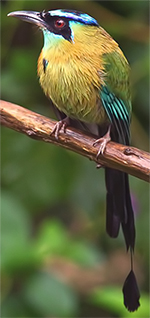 STILL TIME TO SIGN UP
STILL TIME TO SIGN UP
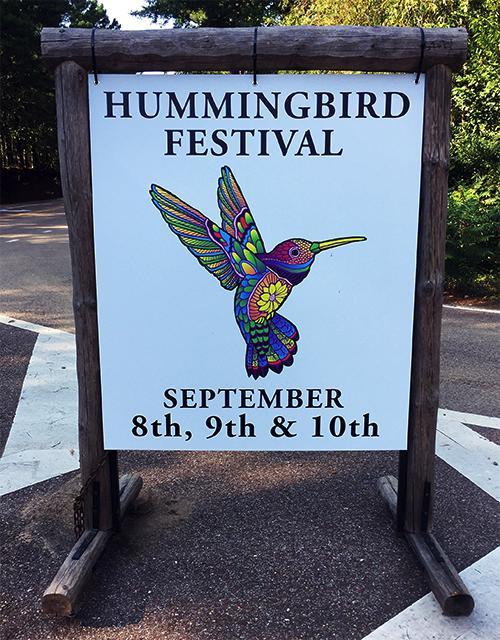

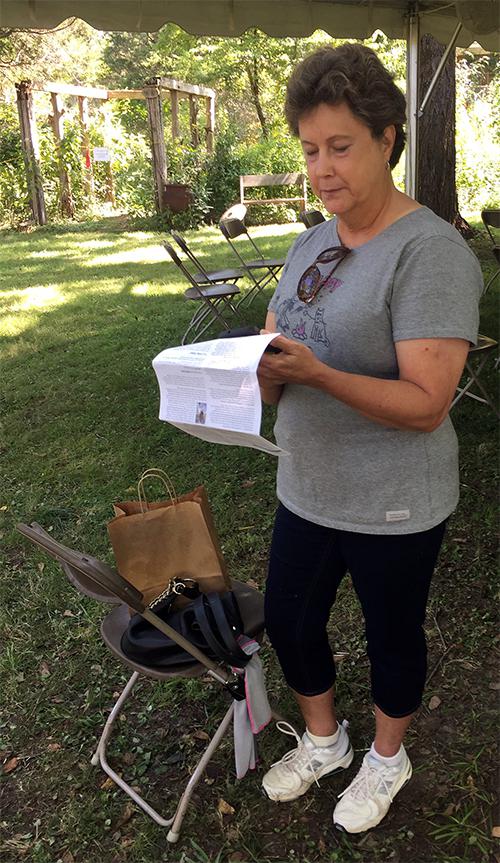

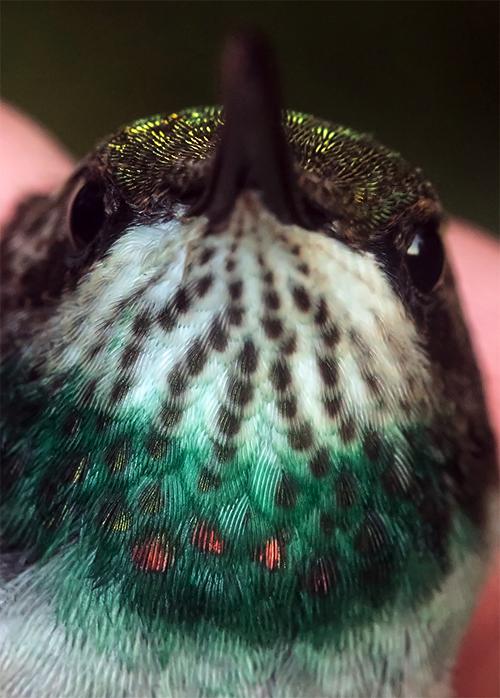


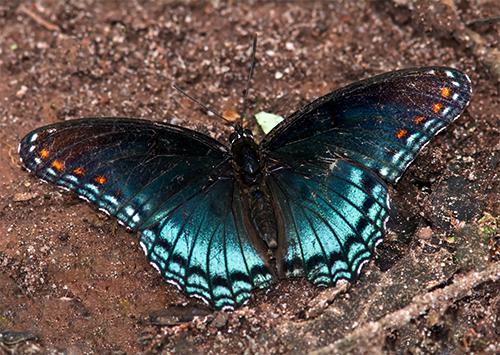
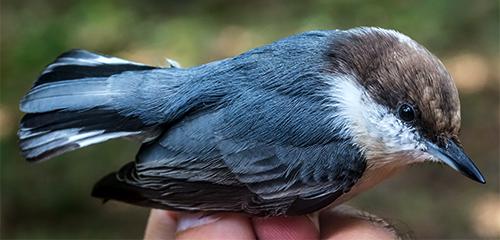








 Please report your
Please report your